Embellish, connect, transform is how artist and educator, Elnaz Yazdani defines – and challenges – the process of embroidery. Using these elements as prompts, literally, metaphorically and poetically, she explores embroidery, including making unseen forces such as magnetism and sound visible.
Elnaz uses traditional goldwork techniques including zardozi, which draws on her Persian heritage. However, rather than precious metals, Elnaz creates embellishment from industrial waste, scraps, and even flowers and foliage from her allotment, thereby transforming ‘the mundane into the magnificent’.
Elnaz is passionate about sharing her textile skills and promoting the importance of embroidery as an art form for the future, as well as for community well being. She believes embroidery has the power to bring individuals together to build and strengthen resilience. At any time, she may be inspiring nine and ten-year-olds to discover ways of making sound waves visible using stitch, or leading a community collaboration project, helping individuals sew their way to better health.
Elnaz Yazdani: I am inspired by industrial upcycled materials and the different ways I can embellish, connect or transform items through stitch to develop a surface or form. My practice explores ways of transforming traditional embroidery techniques through my choice of unusual materials, such as found objects, metal, glass, plastic, rubber and, more recently, dried plant matter. My unique embroidery style has allowed me to work across fashion, jewellery and installations.
Surface alchemy
My inspiration is eclectic and depends on the project. In the past, I’ve been inspired by physics and forces such as sound and magnetism. I was obsessed with the alchemy of cloth, but instead of turning base metals into gold, turning something mundane into something magnificent. It required some searching, testing and exploring on my part to capture a visual but I love working with the unseen.
Since the pandemic, I have explored mental health and the potential power of embroidery on an individual’s well being, resilience and growth. I am currently trying to design a way of defining embroidery that encompasses the process as a means to embellish, connect and transform us, both physically and mentally.
Embroidery has the ability to embellish our lives, connect with each other and transform our outlook of the craft.
More recently I have drawn inspiration from my allotment, working with dried flowers and dried plant matter from the garden. I first got into gardening for my well being. I needed a rest from my practice and wanted to do something different to sewing and teaching embroidery. However, I quickly saw connections between gardening and embroidery: the bed in my yard reminding me of a blank canvas, which I could embellish with plants.
I have since found ways to connect nature and embroidery by exploring how I can use found elements from the garden in my artwork. I love collecting dried plants and items which I can stitch using goldwork techniques and incorporate with embellishment variations.
It’s really got me excited, and it’s merging my two loves of gardening and textiles. This recent use of plant life is drawn from my ongoing interest in the use of unusual objects and exploring ways I can transform them into a sculptural piece of embroidery.
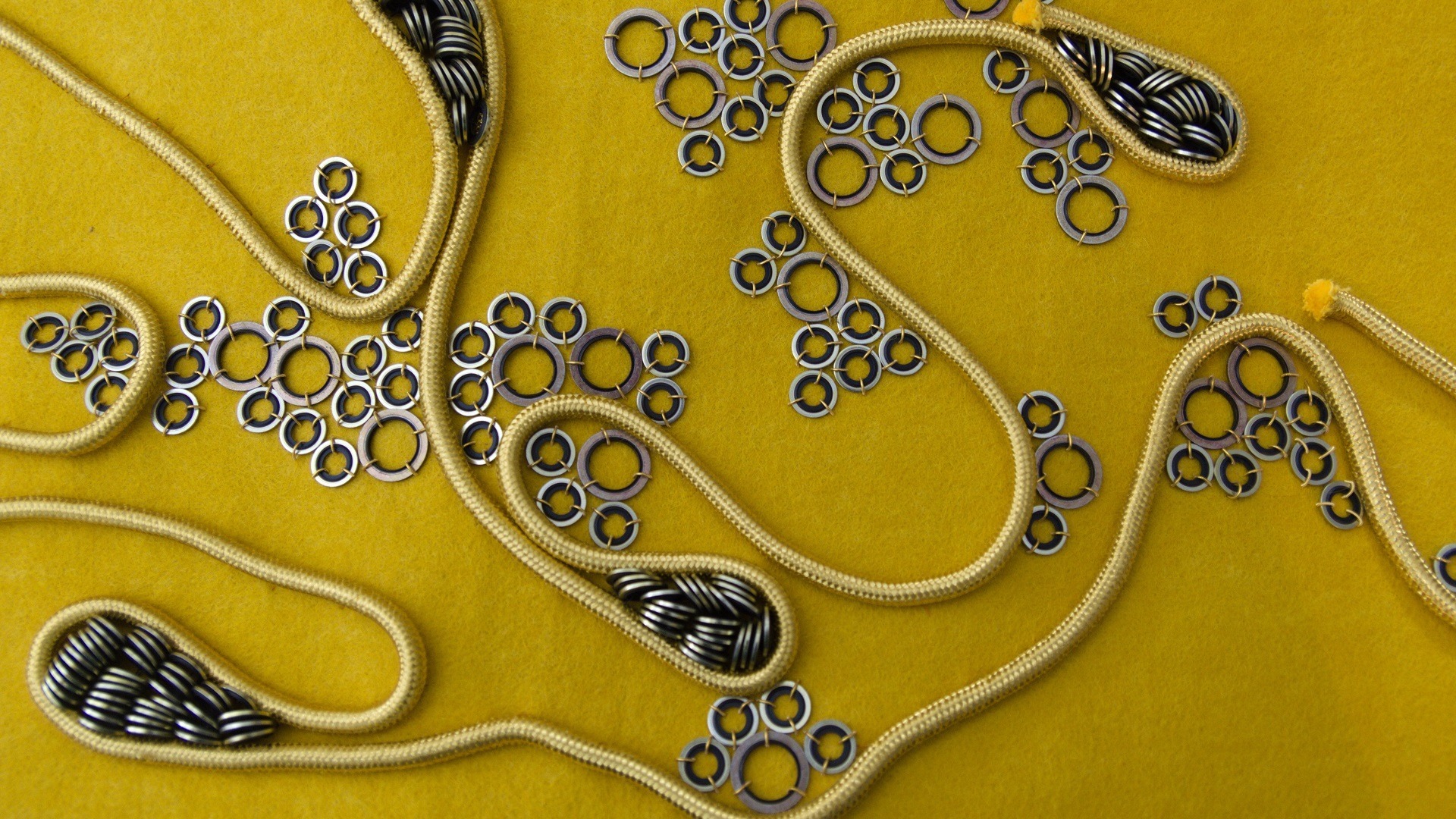
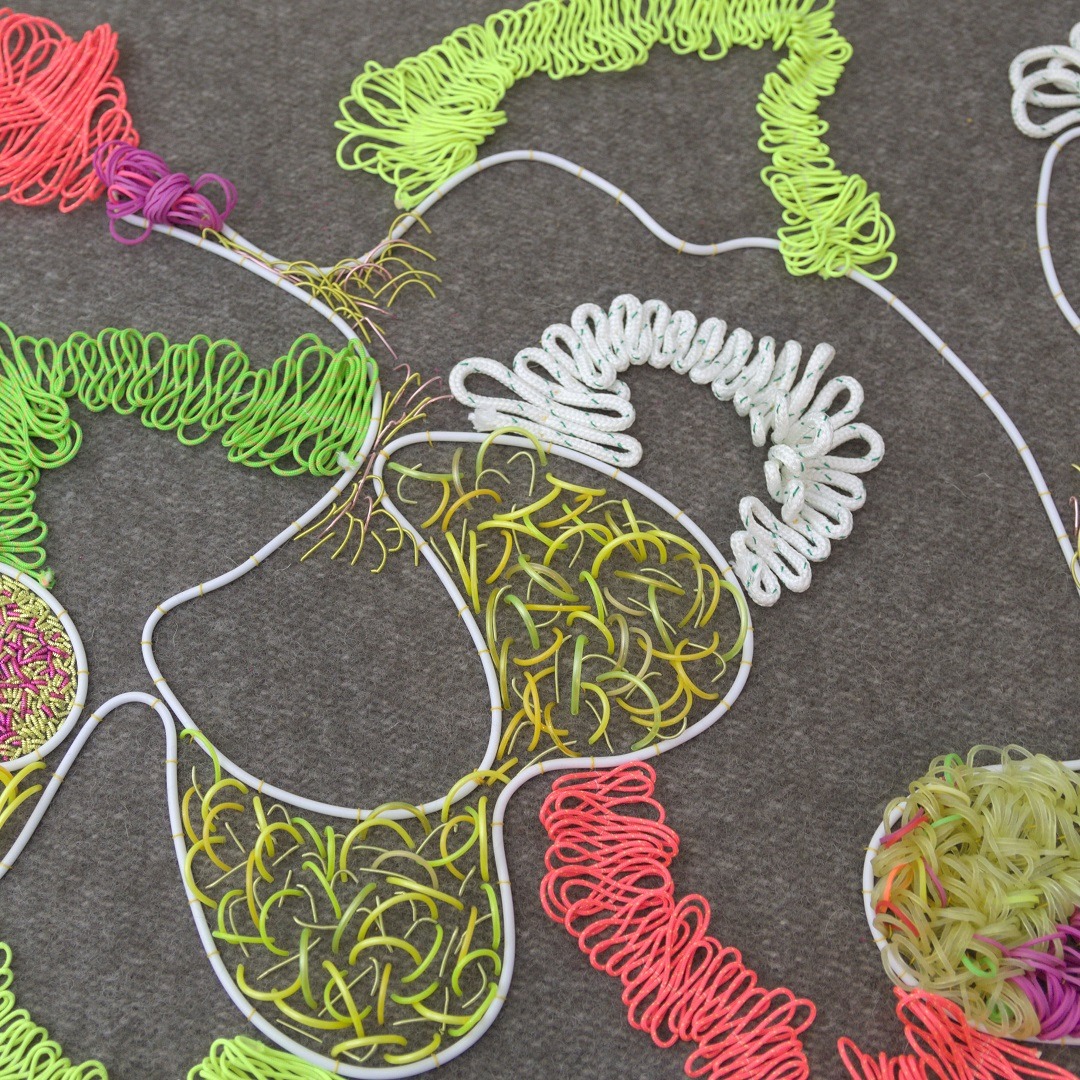
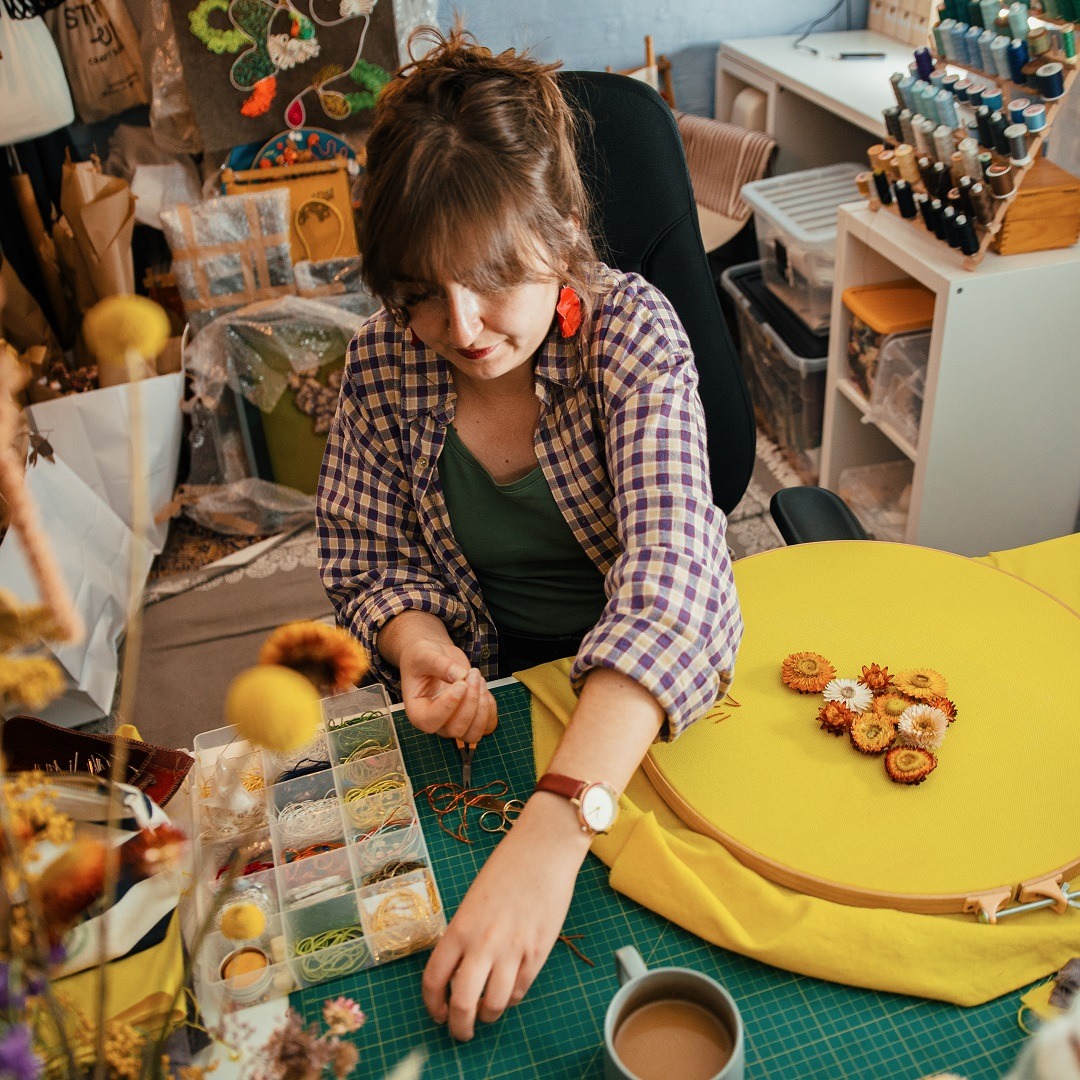
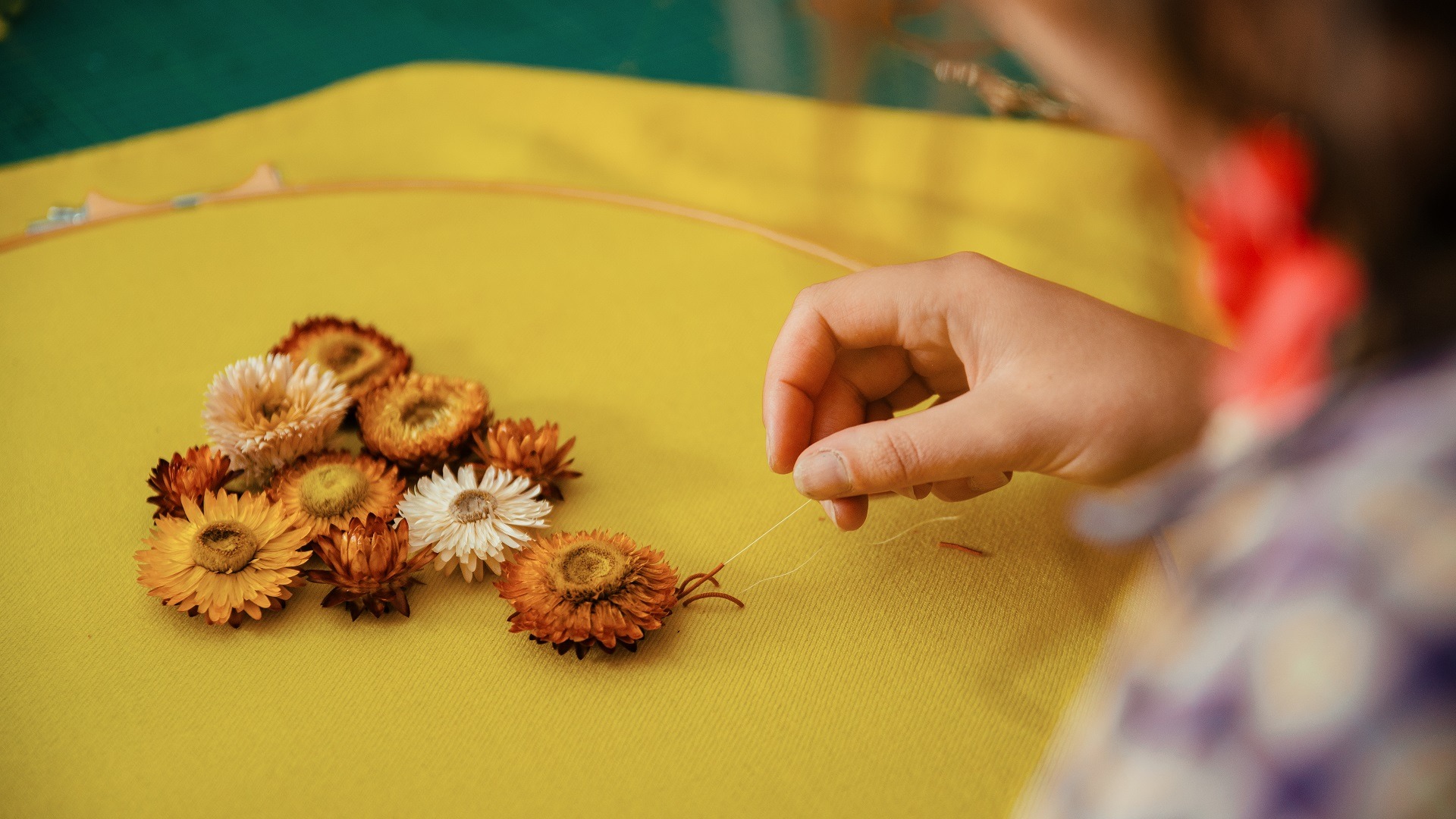
The creative process
My process varies, and the project or theme determines my starting point. I usually begin by exploring or researching the topic. Then I develop an understanding of how that theme might be visually represented in or with stitch and materials.
The next step is collection or gathering. I spend a great deal of time sourcing materials and organising them before I begin any sewing. Unusual materials inspire me and I love discovering new ways of seeing them and putting them together. The preparation is part of the fun.
I collect based on theme, colour, texture, size and combination. It’s as if I’m creating a visual palette of materials.
Then, using sketches or mapping notes, I collage. I lay out my fabric and decide where clusters of certain stitches might form, how they might match or work alongside an area of rubber tubing, for example, or how my chosen purl wire will look next to an area of beads.
Once I have mapped them out, I begin stitching, usually from the centre out. This makes me utilise the whole surface area of the fabric, as well as explore the potential of the piece at a larger scale.
Messing with convention
I enjoy exploring traditional goldwork techniques using unexpected materials. I love using wool grounds such as fine or boiled wools as they provide a strong base to work on, which is necessary when stitching with unusual materials.
A purl thread or bullion wire is used in goldwork. I love the structure of these metal threads and they are great at holding unusual materials and embellishments in place. The structure gives a sturdiness to the work as well as a three-dimensional sculptural quality to the overall piece. I also enjoy using the check metal wires used in goldwork to explore line, mark making and embellishments.
When using any metal wires or unusual materials, I recommend that you always wax your thread and use a fine needle, so the materials don’t snag on your thread or fabric.
I source my unusual materials from all over, however, I have one local recycling store in Leeds called Scrap which I love. I can spend hours there collecting materials and coming up with ideas for new pieces and projects.
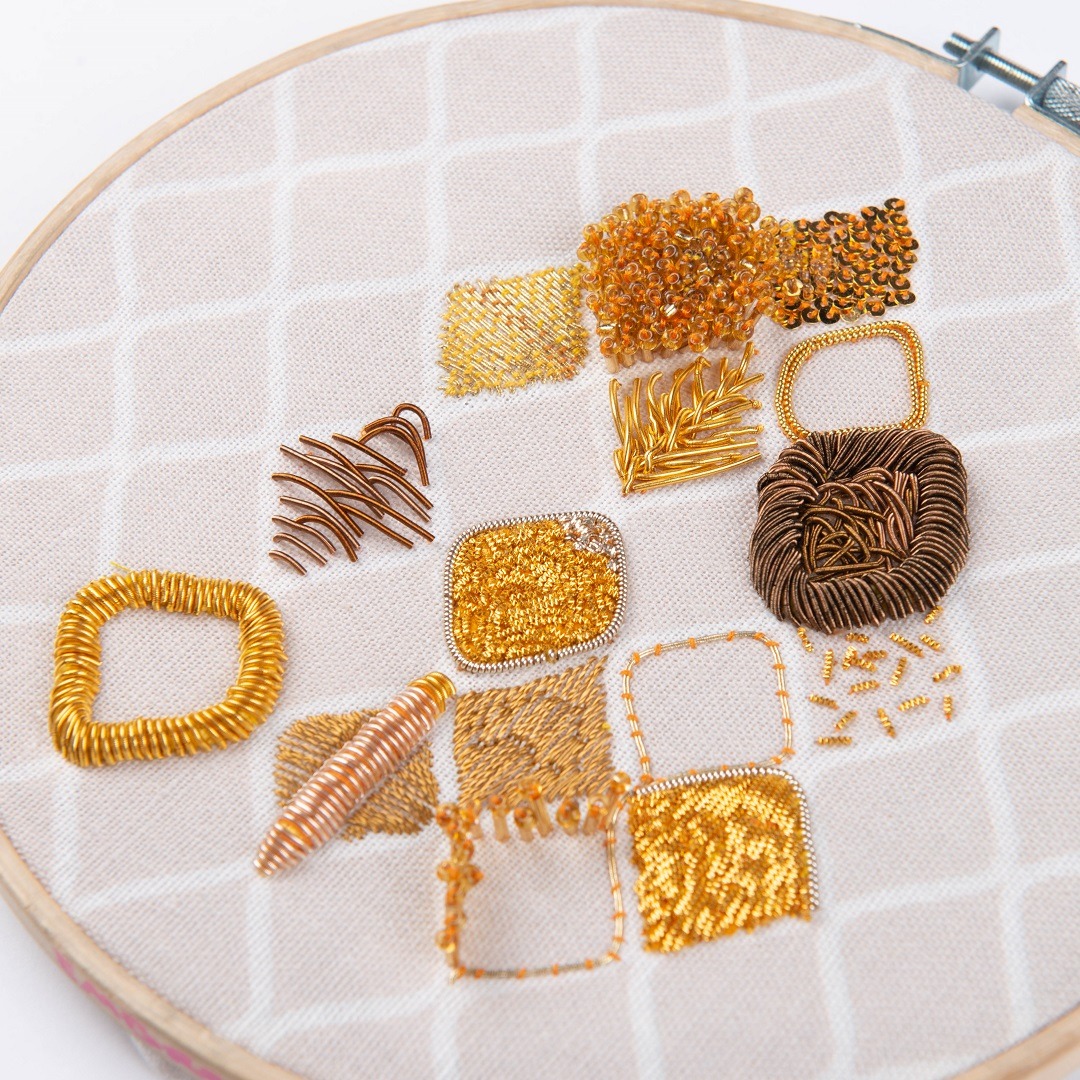
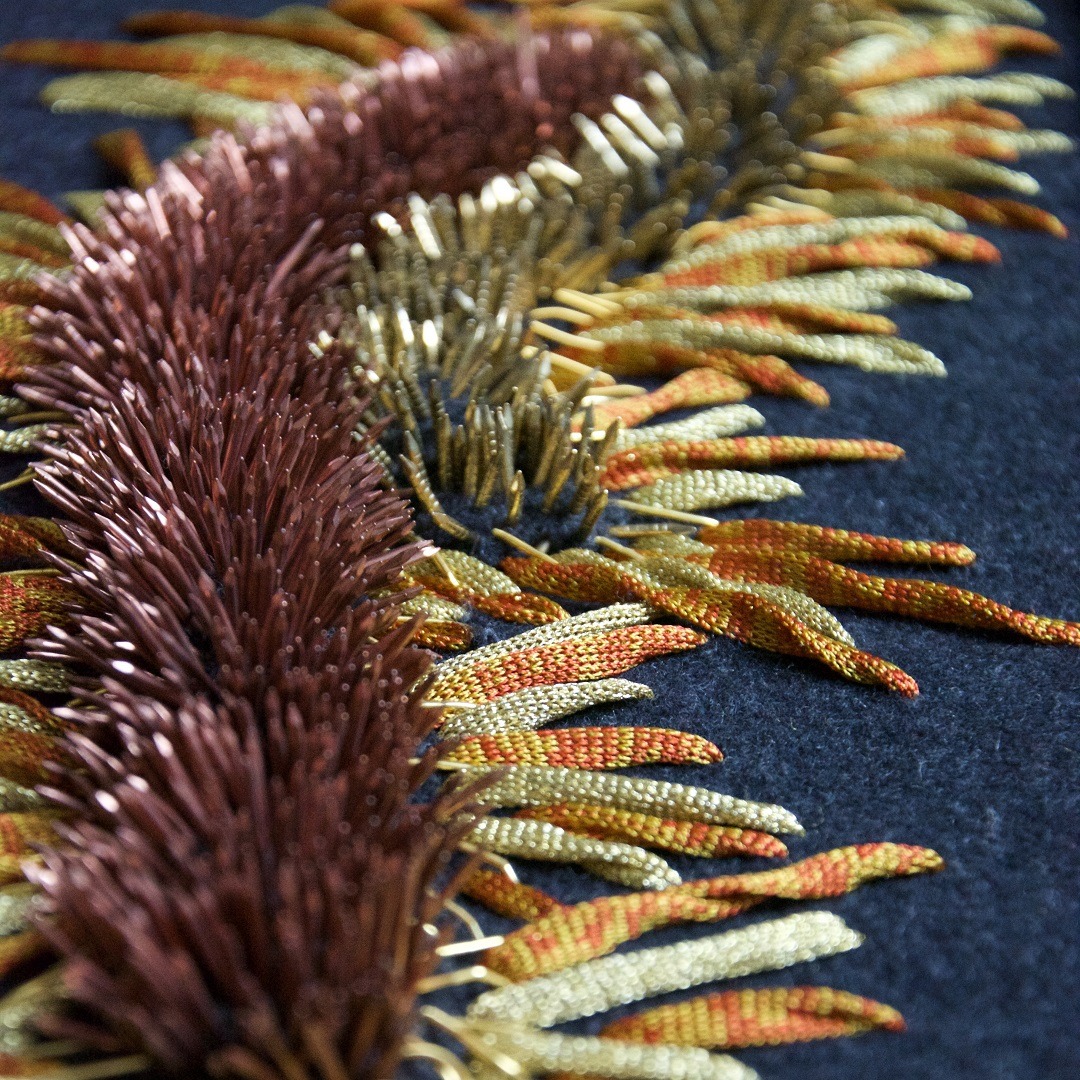
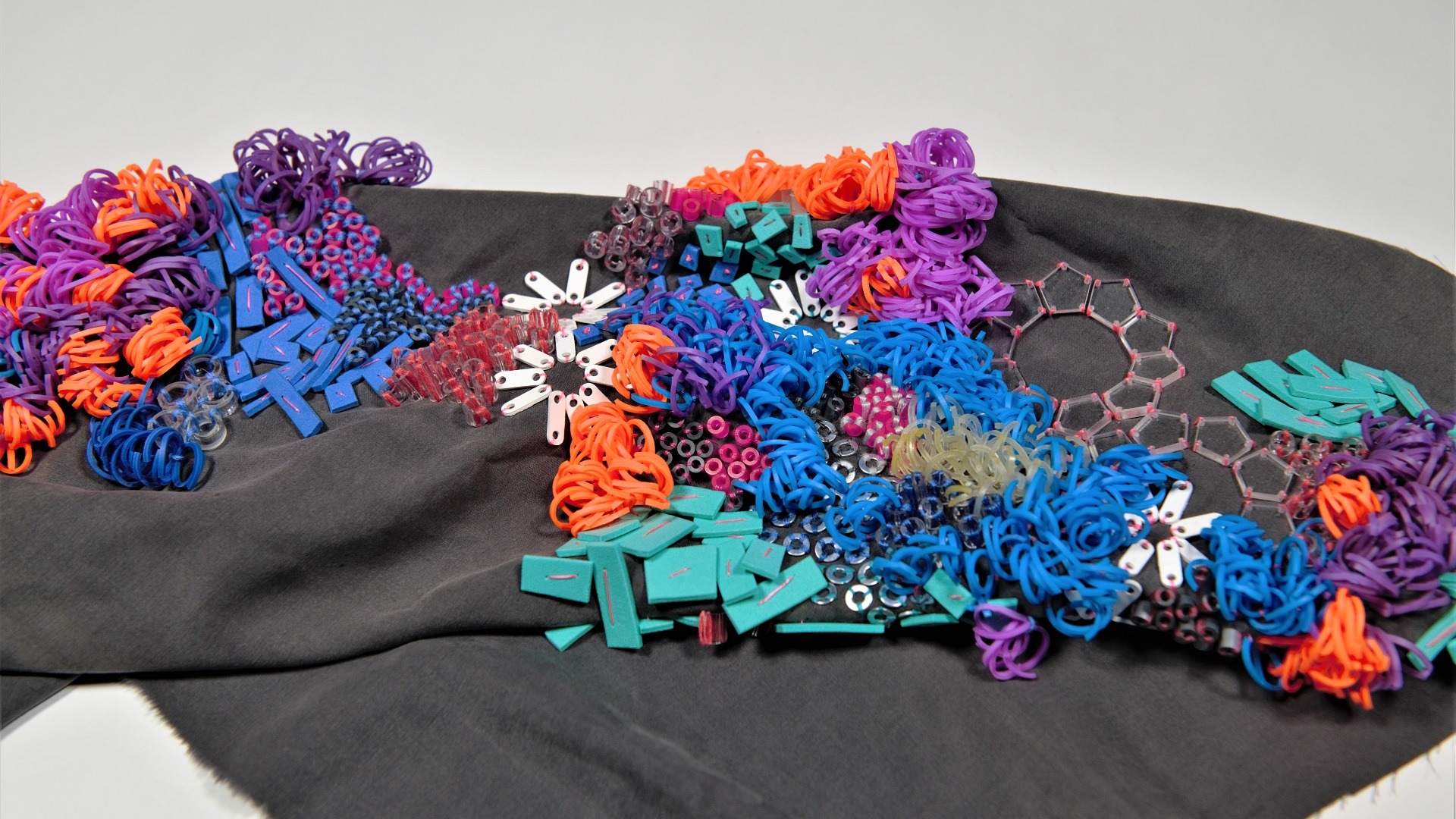
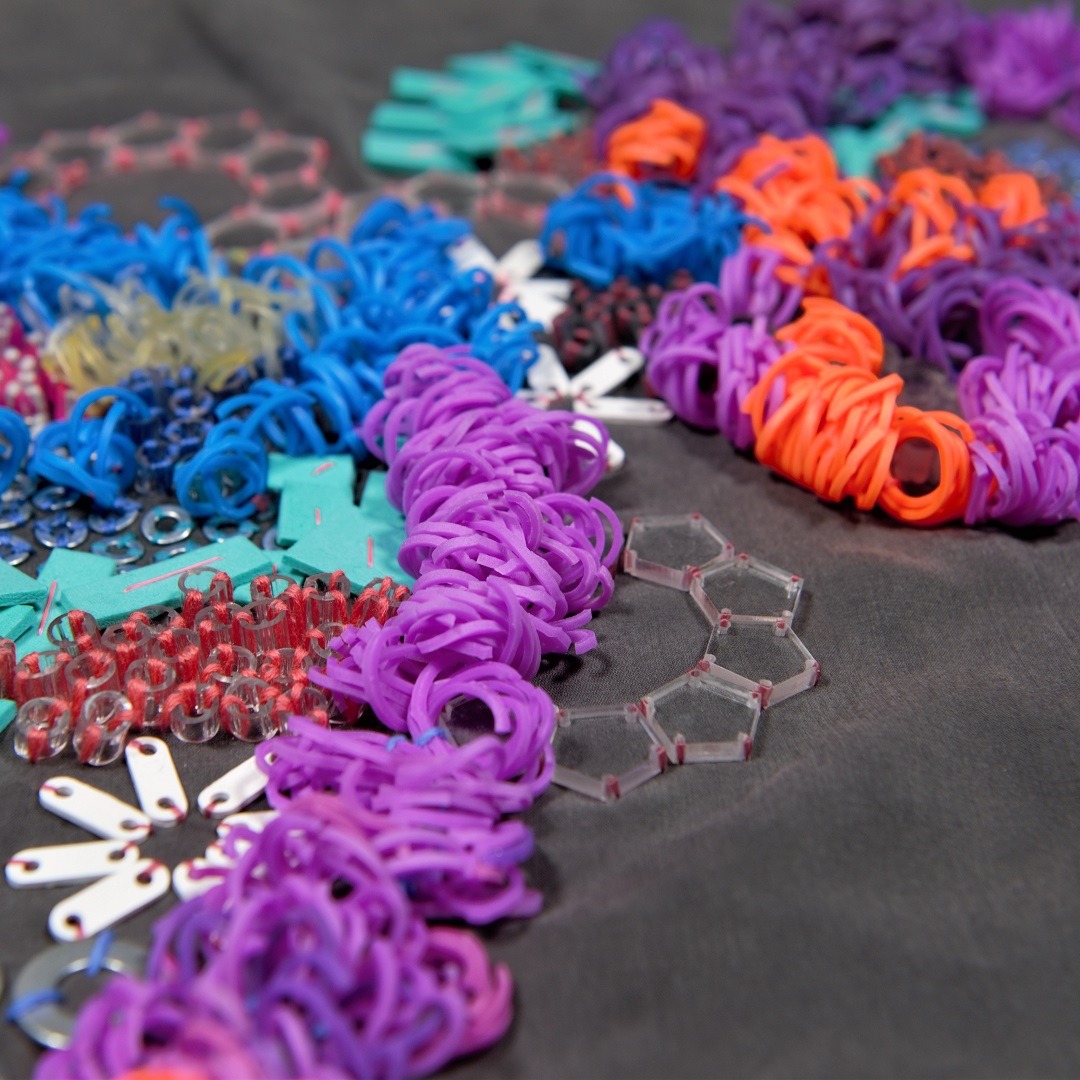
The making of an artist
My art is ever evolving and I have encountered many influential turning points along the way.
I knew I wanted to specialise in embroidery as a craft practice and discipline. My degree at the Manchester School of Art helped shape who I am as an artist today – the inspirational lecturers and students on my course were fantastic.
I was taught by some well known and experienced embroiderers such as Alice Kettle, Kate Egan, Jane McKeating and Nigel Hurlstone. They helped each one of us tune in to our practice, and our likes and dislikes so that everyone’s work was unique. All these individuals helped to shape my understanding and definition of what embroidery is or has the potential to be.
The Covid pandemic and its lockdowns were a difficult time. However, it was also a key moment for my art as I was awarded the Beryl Dean Award for Teaching Excellence in Embroidery and I became an Embroiderers’ Guild Scholar (under 30), after the successful launch of my virtual embroidery school Embroider Your Future.
It was a fantastic achievement during such a turbulent and uneasy time. Although I struggled with my well being, I sought comfort through my art and made some of the work I am now most proud of including Magnetic World.
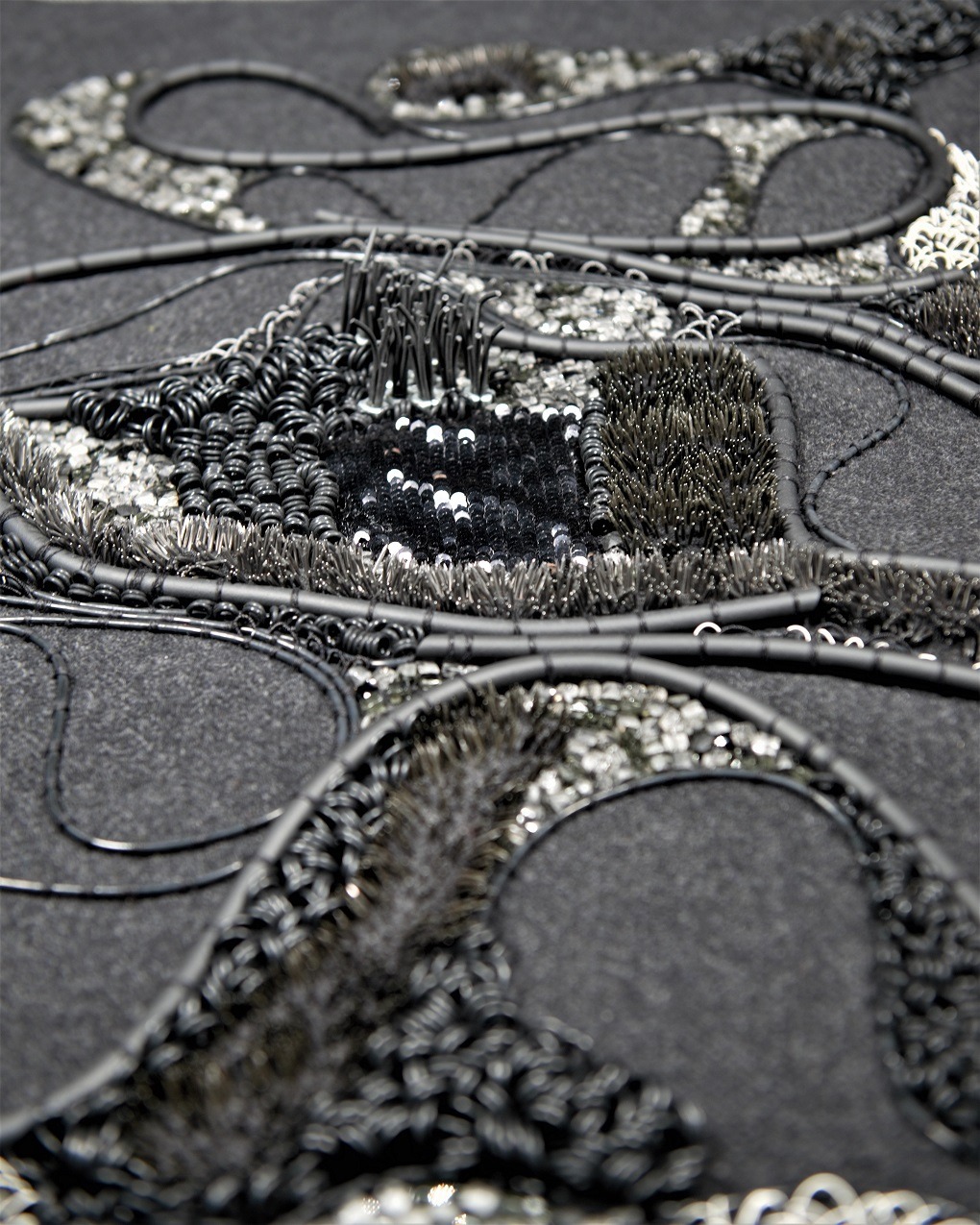
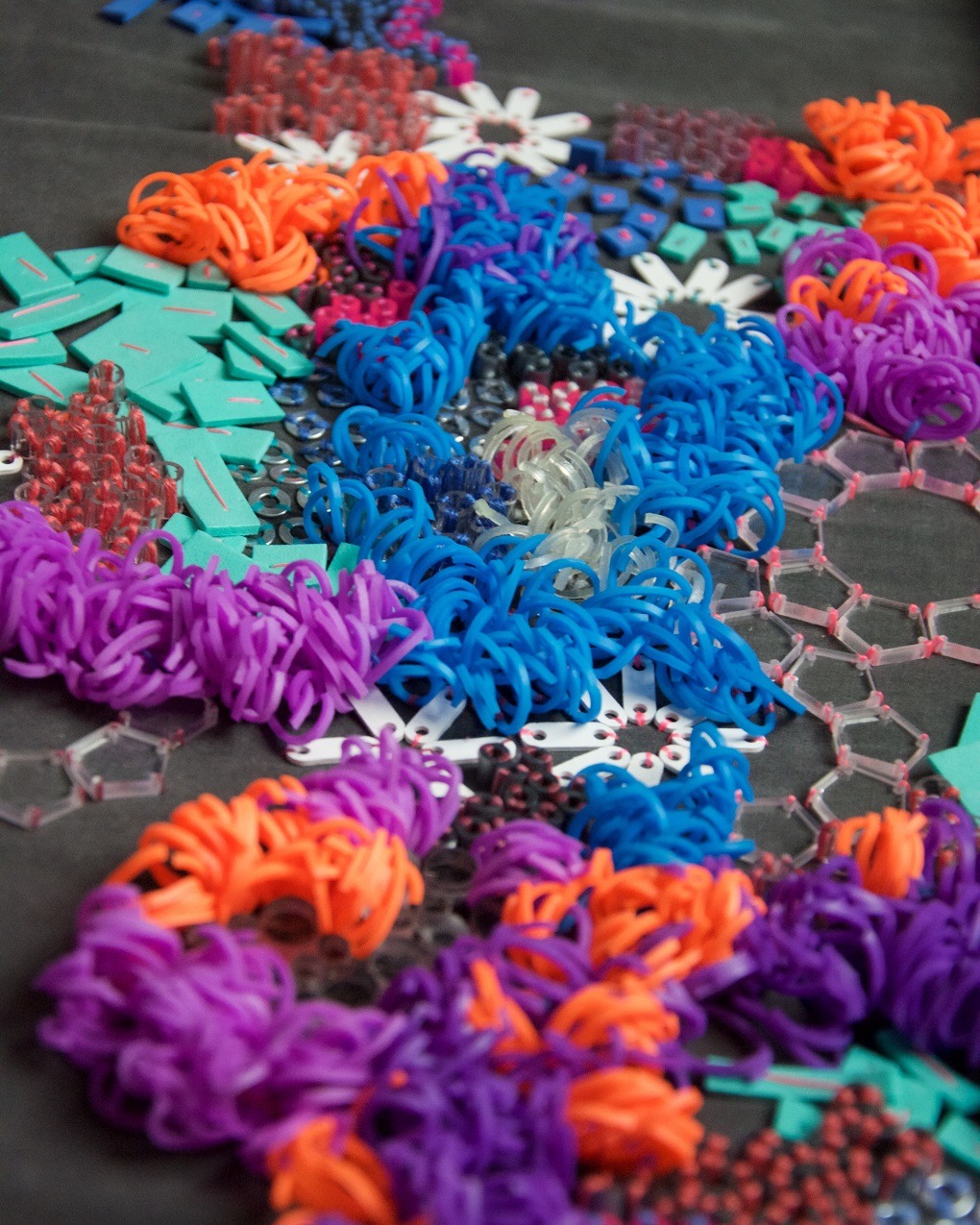
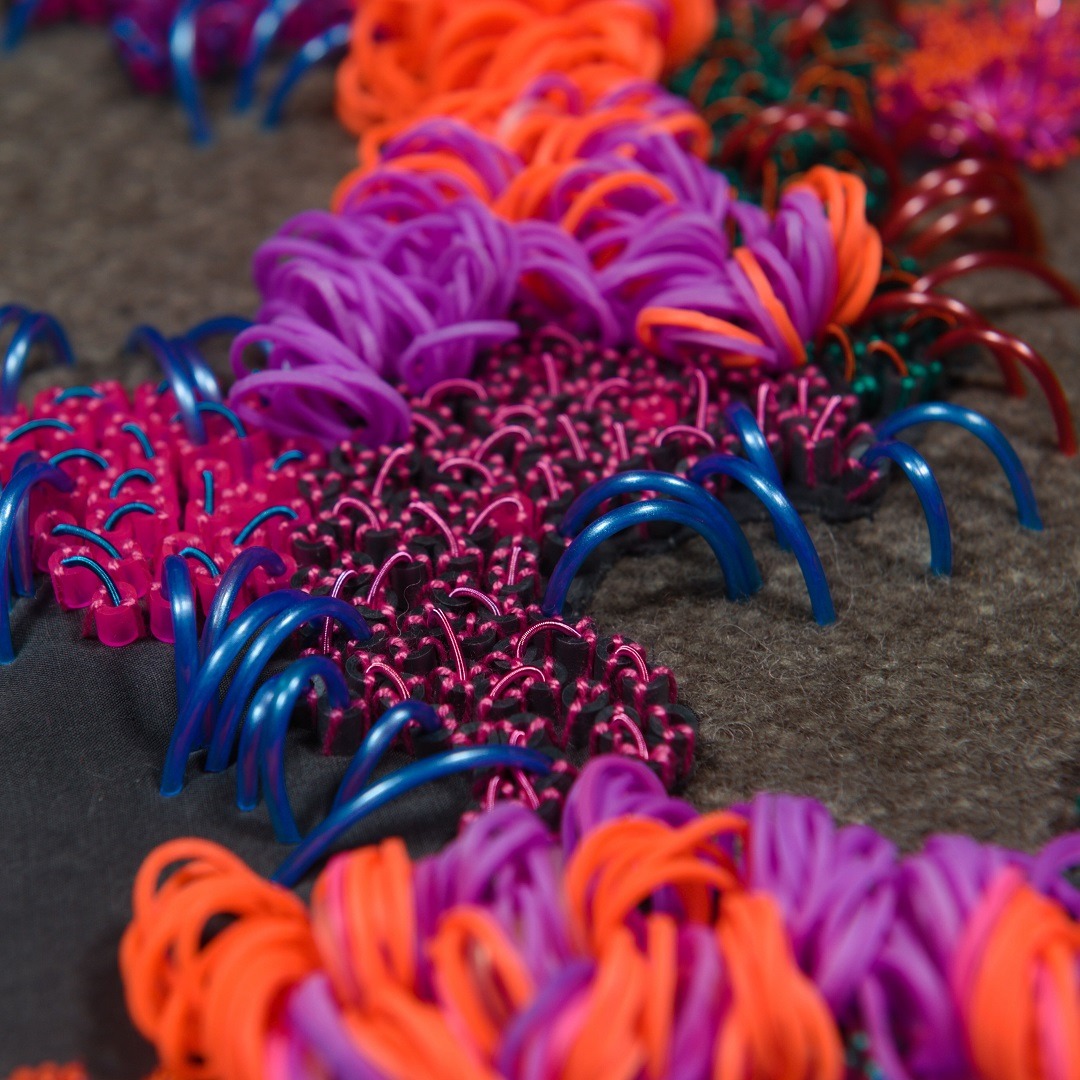
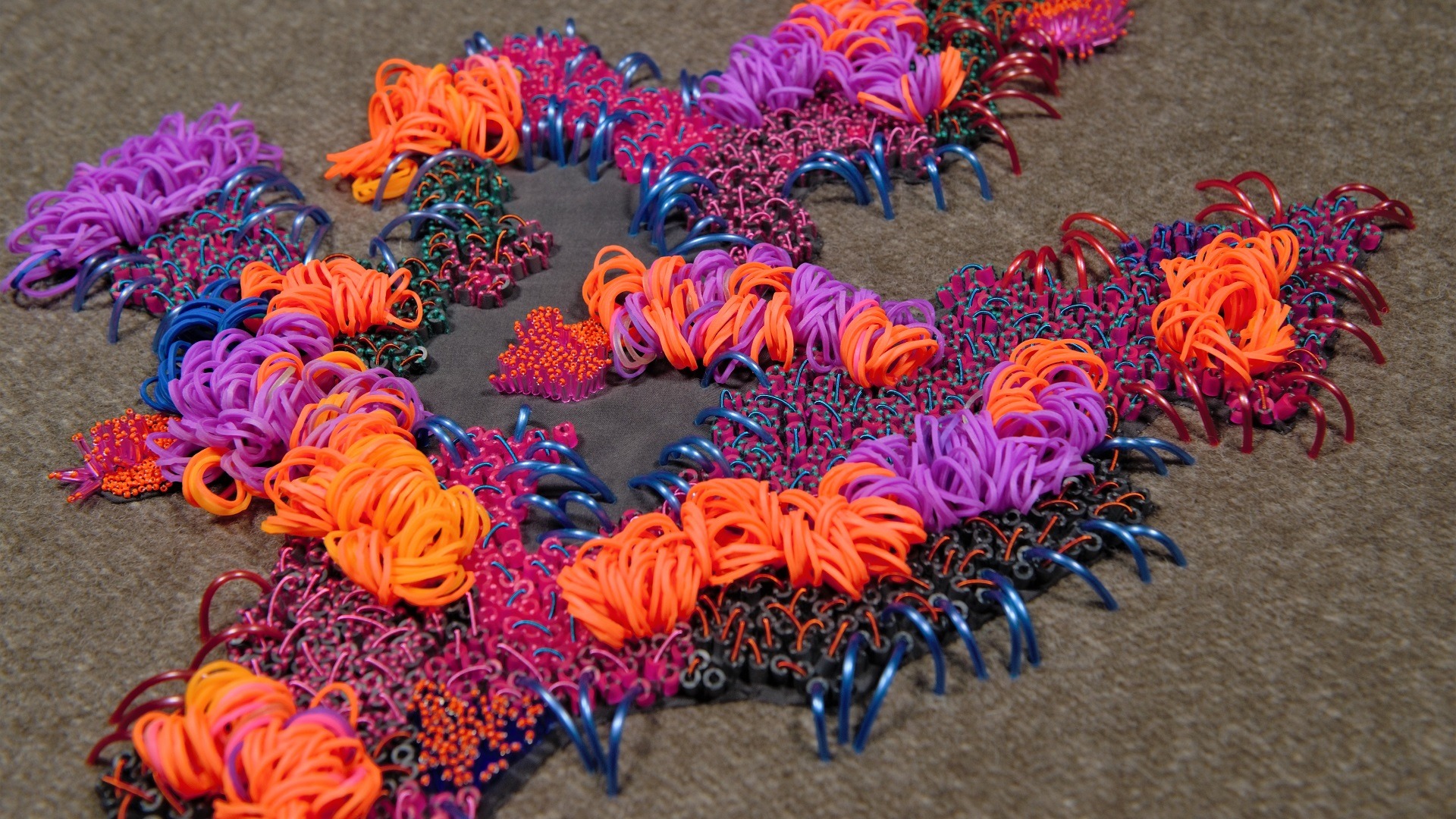
Teach and learn
I taught embroidery to costume, textile and fashion students at the University of Huddersfield for seven years. During this time I developed a huge body of techniques, which I continue to explore in my own practice.
In my role as embroidery technician, I explored and taught all sorts of applications and techniques, including digital embroidery and machine embellishment techniques mixed with my usual hand sewing and embellishment processes.
Working as an embroidery technician for so long helped me understand and respect the importance of traditional technique and mastering your craft.
I loved teaching fabric manipulation techniques such as smocking. My favourite type of smocking is Canadian smocking or direct smocking. I enjoy working a smocked ground into the fabric and then working my embellishments or purl bullion wires over the top to provide depth and interest.
My work developed massively during this time as I had the chance to explore techniques and deepen my understanding through teaching and delivering them on a regular basis.
When I was a technician, I used to see how everyone (including myself) wanted to learn everything! However, we encouraged students to specialise or focus their skills to develop a key aspect of their practice, rather than flit from one technique to the next – although it is a tricky thing to do when you are learning because everything is so inspiring.
I do use a lot of different techniques because of my technical background. However, I find the materials help limit me as I tend to explore materials and combinations rather than constantly introducing new techniques.
If you like the look of a technique, I recommend you explore it thoroughly and get to know it well.
I did this with bullion wire that’s used in goldwork. Exploring various applications and ideas using just one technique was really helpful.
One generation to the next
Sewing and embroidery have always come naturally to me. They have always just been there: simple stitches woven into everyday life. As a young girl, I learned embroidery from my mother, who had learned it from her mother. My grandmother was a dressmaker, so she had a wealth of sewing knowledge to share and pass down through generations.
My Persian heritage is from my father, who moved to the UK from Iran in 1978. My grandfather owned a fabric shop in Iran so my dad grew up surrounded by fabric. He remembers being a small boy and learning how to sew a buttonhole stitch. When I was a teenager and raiding my grandmother’s old sewing things, I found a small stitch booklet, 29 Embroidery Stitches and I taught myself most of these.
I learned the power of knowing ten to 15 basic embroidery stitches. Then, the needle becomes like a wand, and you are free to express yourself with stitch and thread in any way you like.
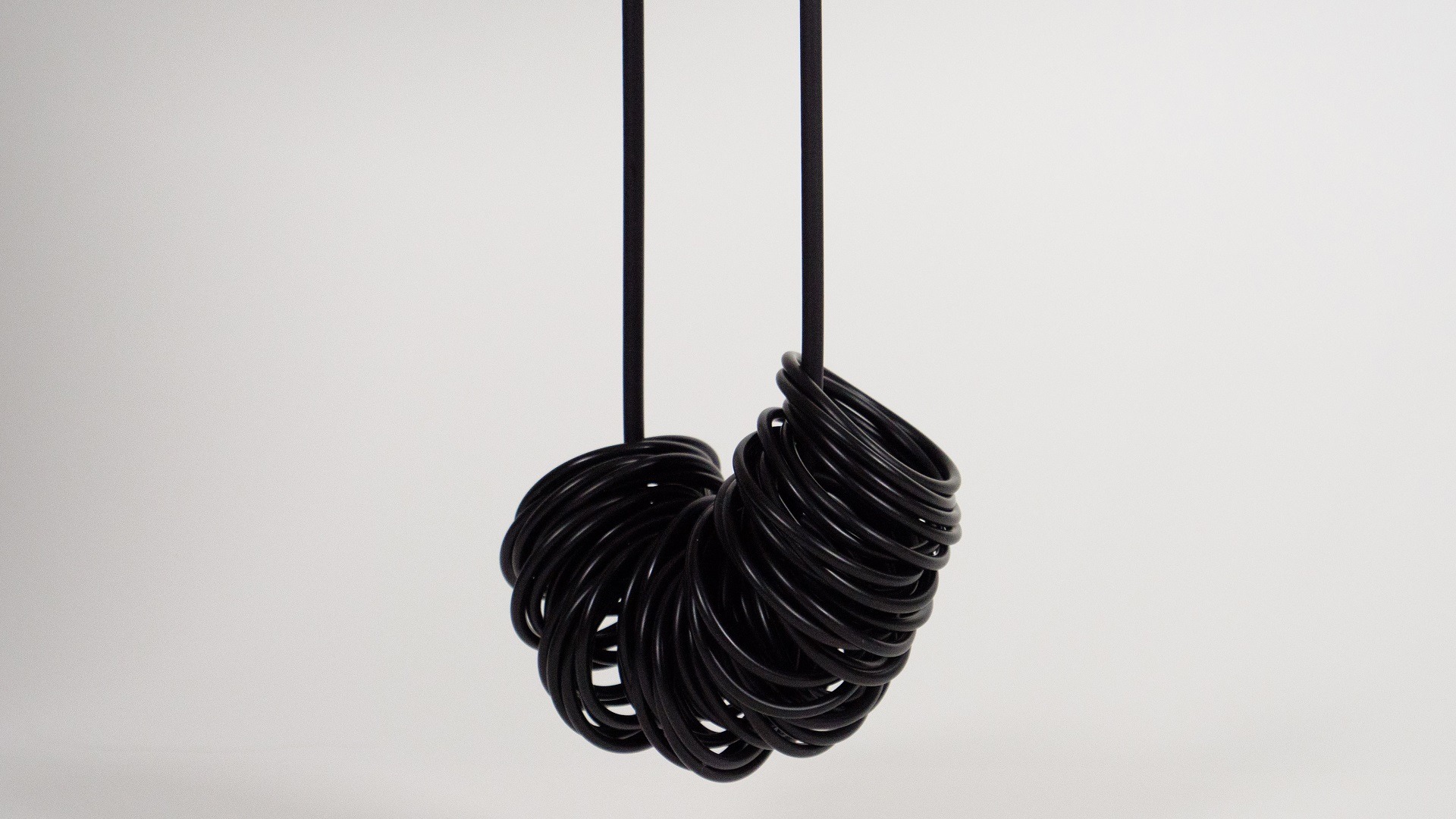
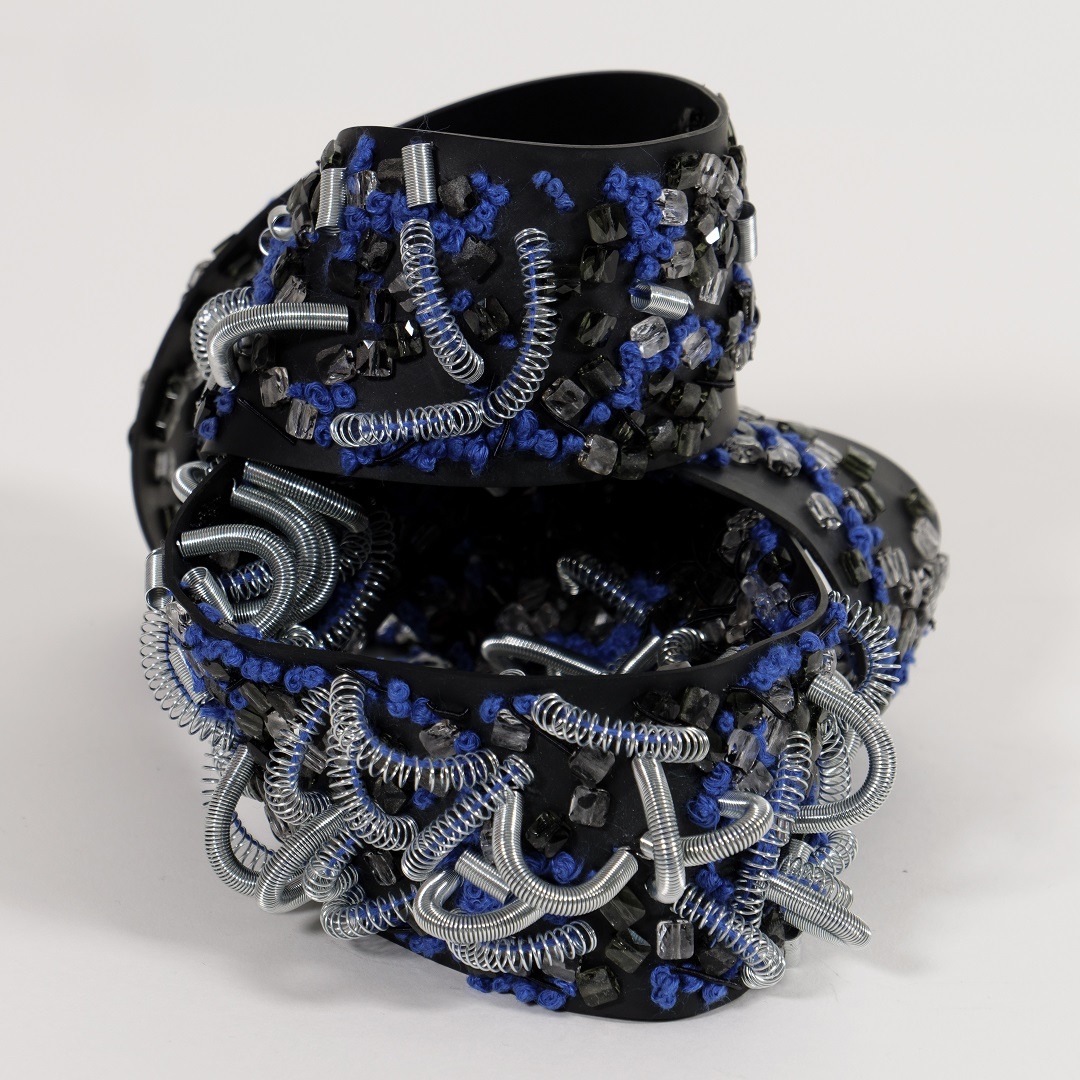
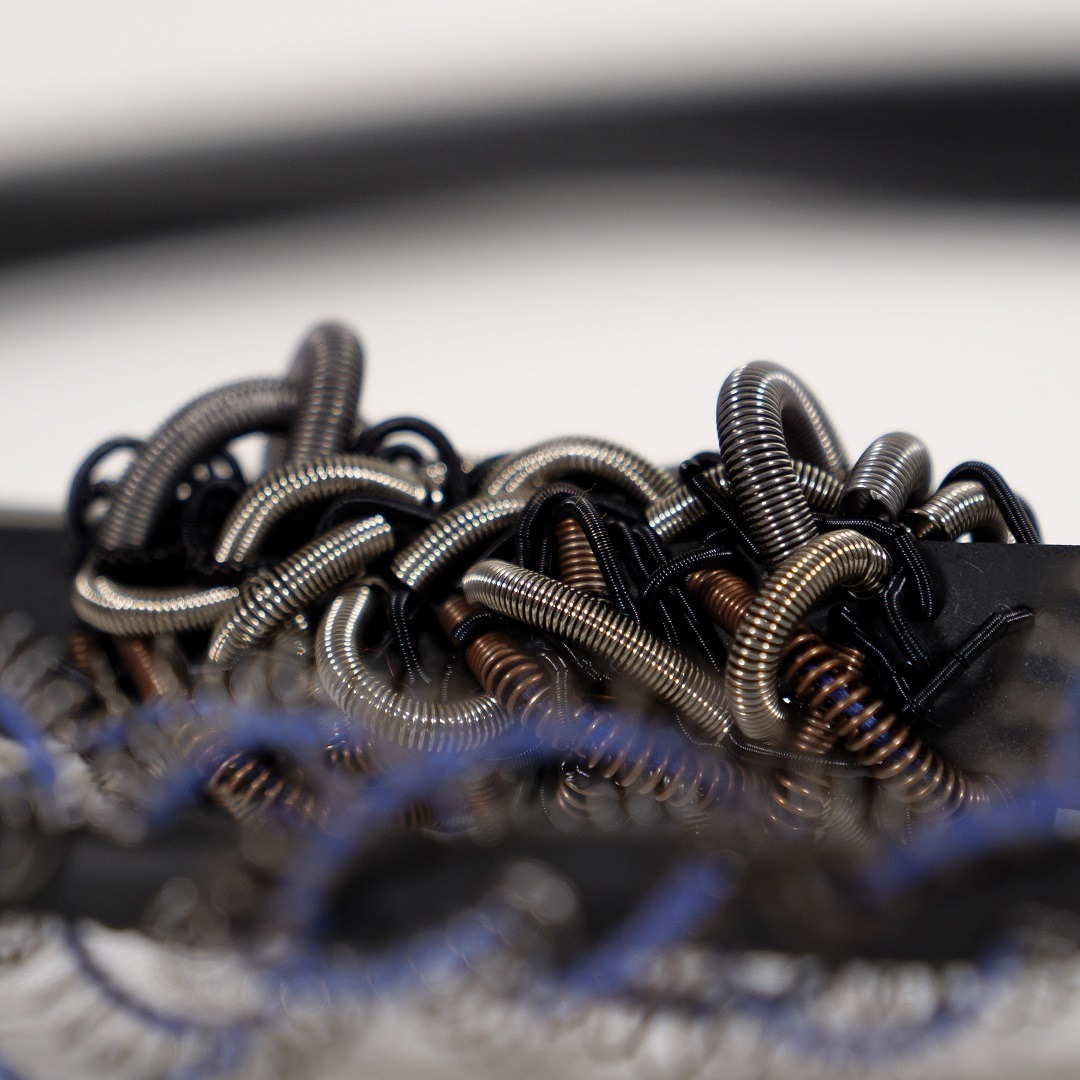
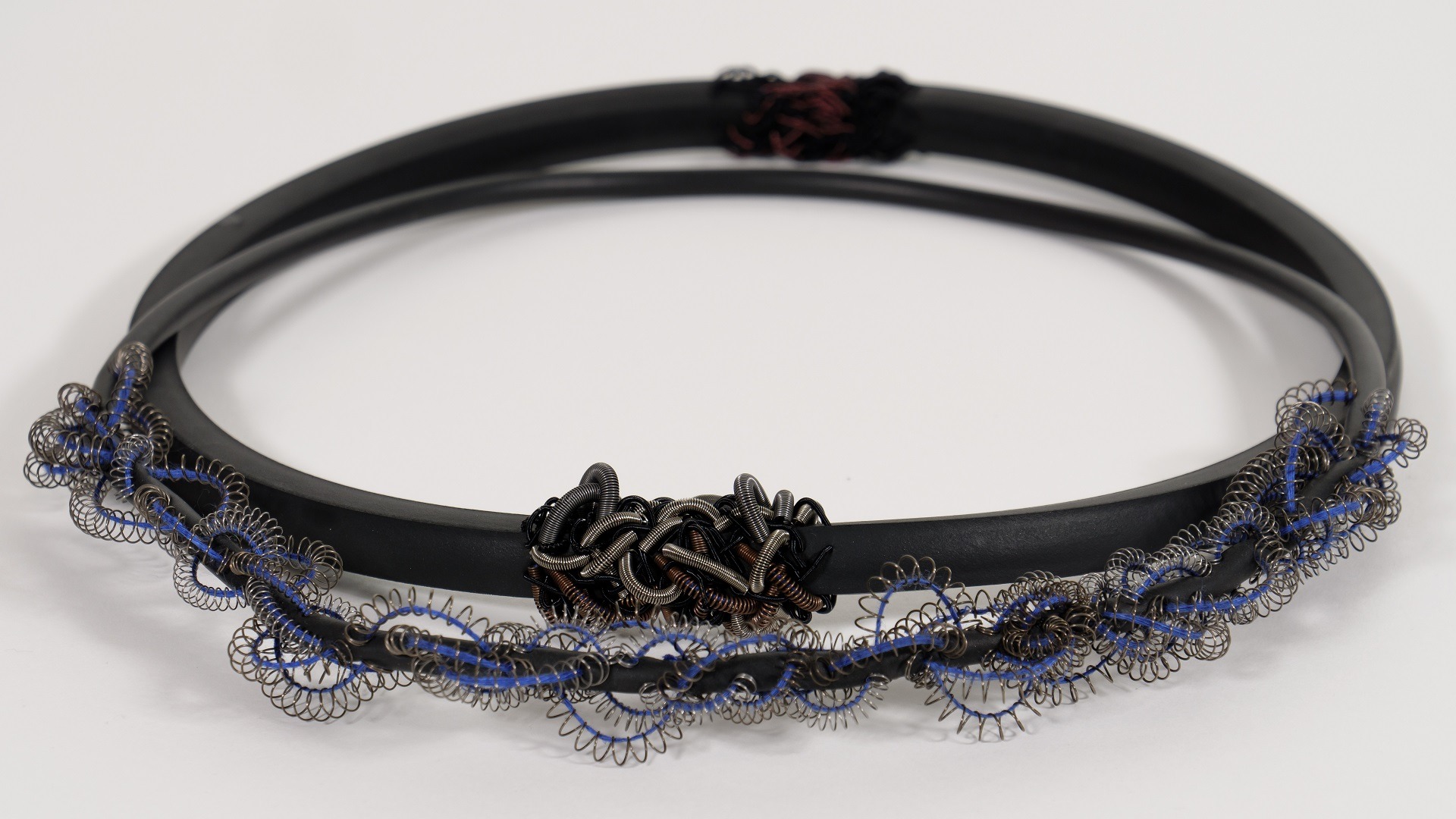
Community connections
I have always taught embroidery workshops in the community alongside my practice, however after two years of lockdowns, business closures, illness, and isolation, I felt communities must creatively rehabilitate culturally and socially. Therefore, I wanted to explore working more with embroidery in the community.
I began working with women and non-binary groups across Leeds and have continued to work at Stitch-Up CIC running weekly sessions for well-being and embroidery, as well as for WOVEN in Kirklees, where I provide a number of community workshops and courses on embroidery.
My creative practice has shown me how embroidery and its education can improve community well being and connect people.
My work with groups is often through social prescribing means – individuals are prescribed by their doctor or via a mental health organisation such as Mind and directed to my weekly sessions. I run the sessions differently based on the project or theme for that term. For example, we are currently making a quilt top with patchwork and using embellishment and embroidery techniques over the top.
It’s lovely to work on something collectively and it will remain at the community centre when we finish. All the artwork I create with the community stays within the community so they can enjoy it. I am currently undergoing qualitative community engagement research on an MA by research at the University of Huddersfield.
Working with the community is healing for the individuals involved in the sessions and also for the artist leading the session. Sharing skills with others is huge for me. I love teaching embroidery, and I enjoy inspiring others and encouraging others to get involved with the craft. I have made wonderful connections through these groups and formed lasting friendships and networks in my immediate community. The community gives me a genuine love for my craft.
We learn from each other and inspire each other with ideas and support through stitching together. Stitch is very powerful at bringing people together after times of hardship.
Embroider your future
I carried on teaching throughout the pandemic and developed my own online summer school Embroider Your Future. In 2020 I was commended with the teaching excellence award in embroidery via the Embroiderers’ Guild (Beryl Dean Award).
My intention behind applying was to showcase my sample work and contribution to embroidery as an artist but also as an educator. At the time, I was working as an embroidery artist as well as an embroidery technician. I had been working in education for five years and I could see a declining number of students taking subjects such as textiles. I wanted to try and combat this with my scholarship submission.
I submitted a range of sample work exploring my hand embroidery style and I developed a week-long educational summer school called Embroider Your Future designed to inspire and support GCSE and A Level students (16-18 year olds) with their understanding of embroidery and its potential in the creative industry.
Since my scholarship year, I have also developed Embroider Your Future into an ongoing online course via the Embroiderers’ Guild for those interested in embroidery and design. I would like to continue with this course for as long as I can, developing it along the way to suit the needs of the audience. I aim to bring the course to students at school wanting to explore hand stitch in their work and inspire the next generation of embroidery artists and designers.
I am dedicated to sharing my textile skills and promoting the importance of embroidery as an art form for the future and for community well being. I am currently involved in a number of educational projects across Yorkshire which embed textiles and art into the early years’ curriculum including Weaving Together a Story of Place funded by the Paul Hamlyn Foundation and Change Project 2023 funded through the Mosaic Group.
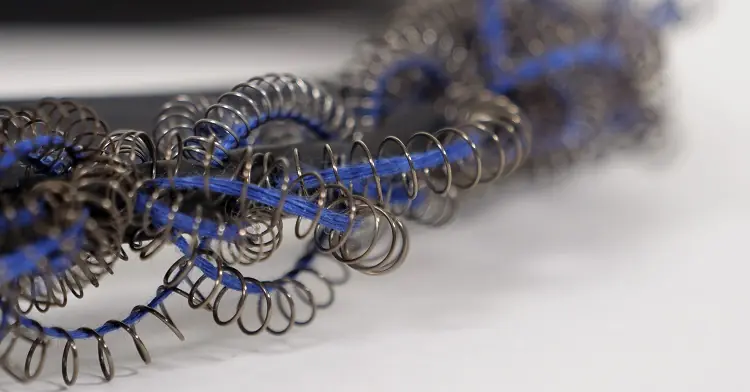

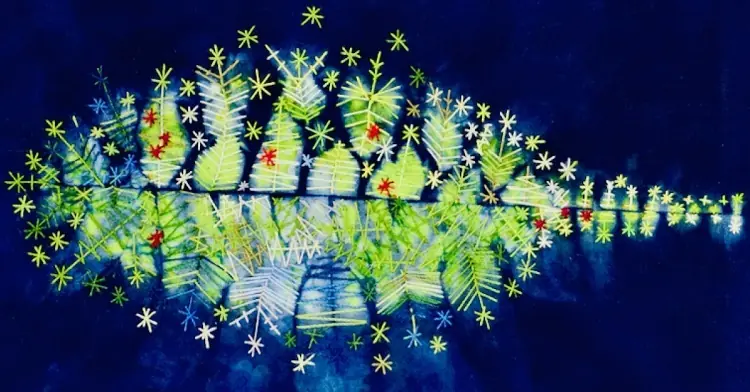
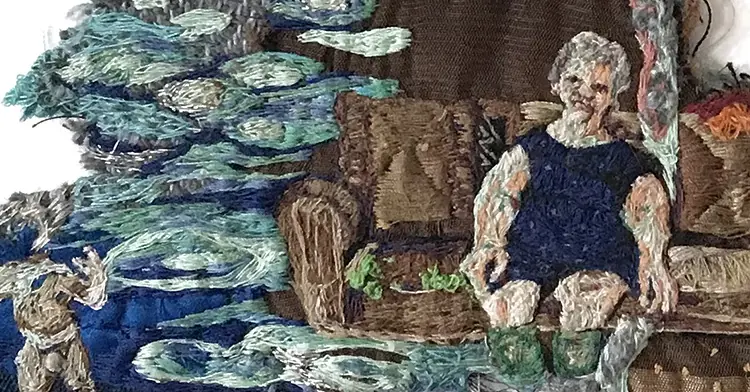
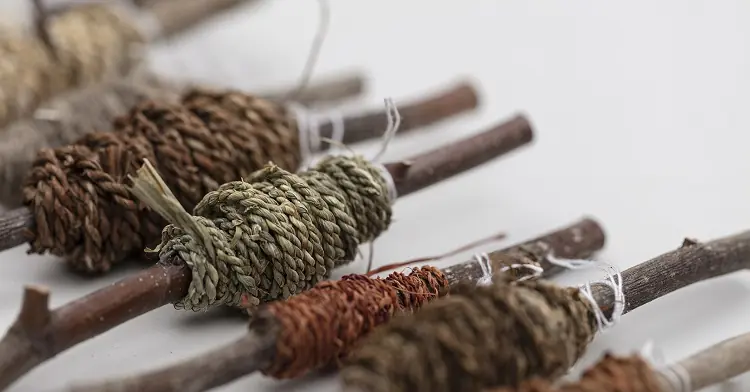
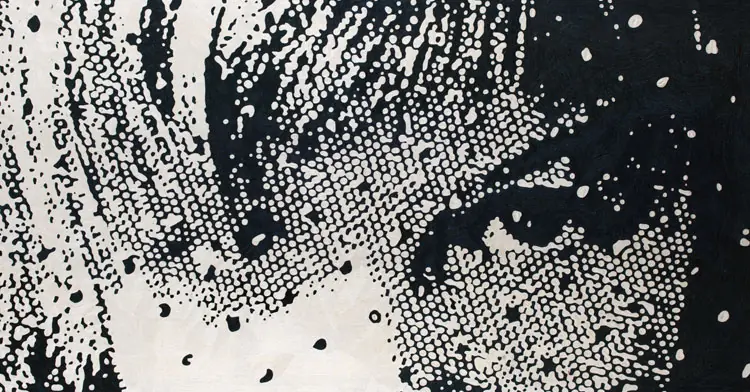
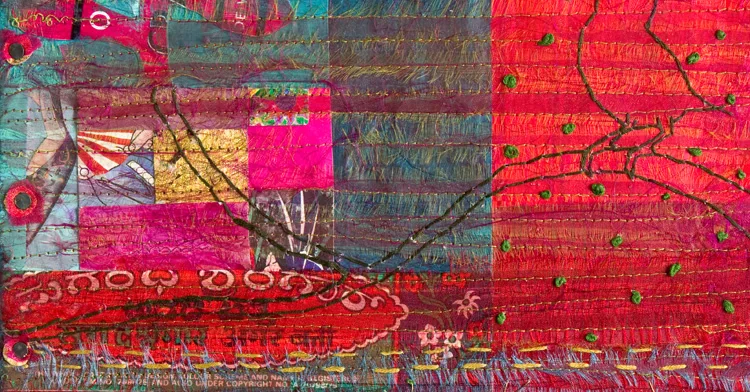

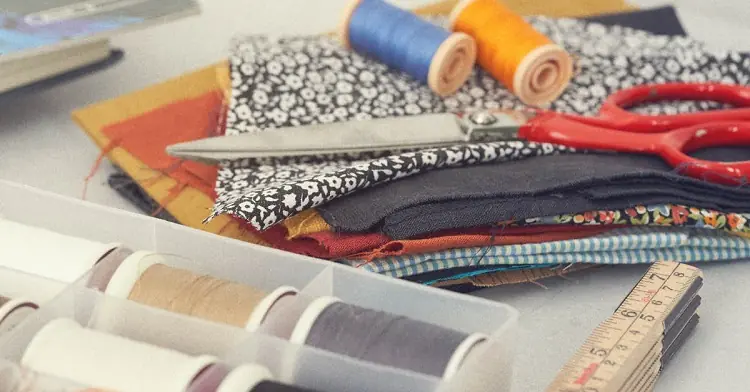
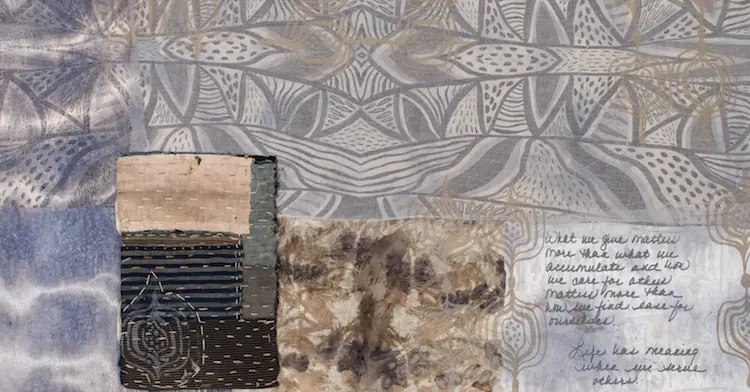
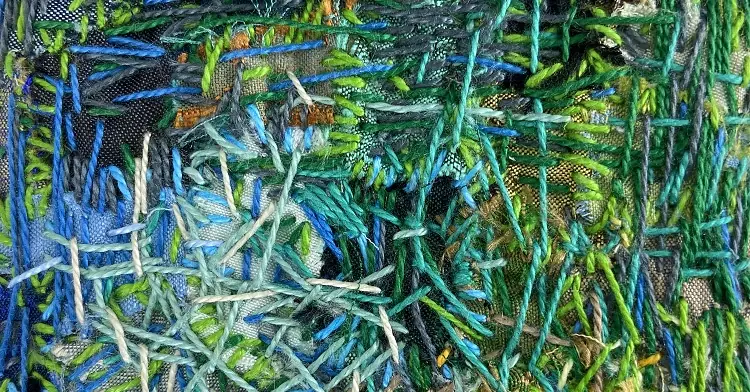
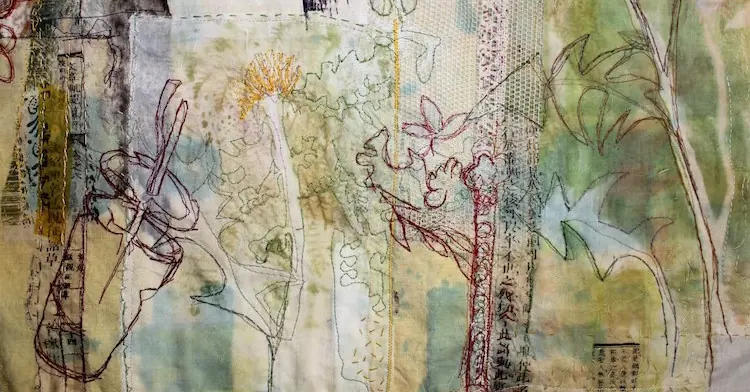
1 comment
Rosângela Soares
Boa noite.
Realmente incentivador sua entrevista. E concordo o bordado Dalva nossa saúde mental. Amo ver o inusitado sendo feito. Transformar restos ou tecidos usados em outra coisa me encanta. Parabéns por sua arte
Rosângela